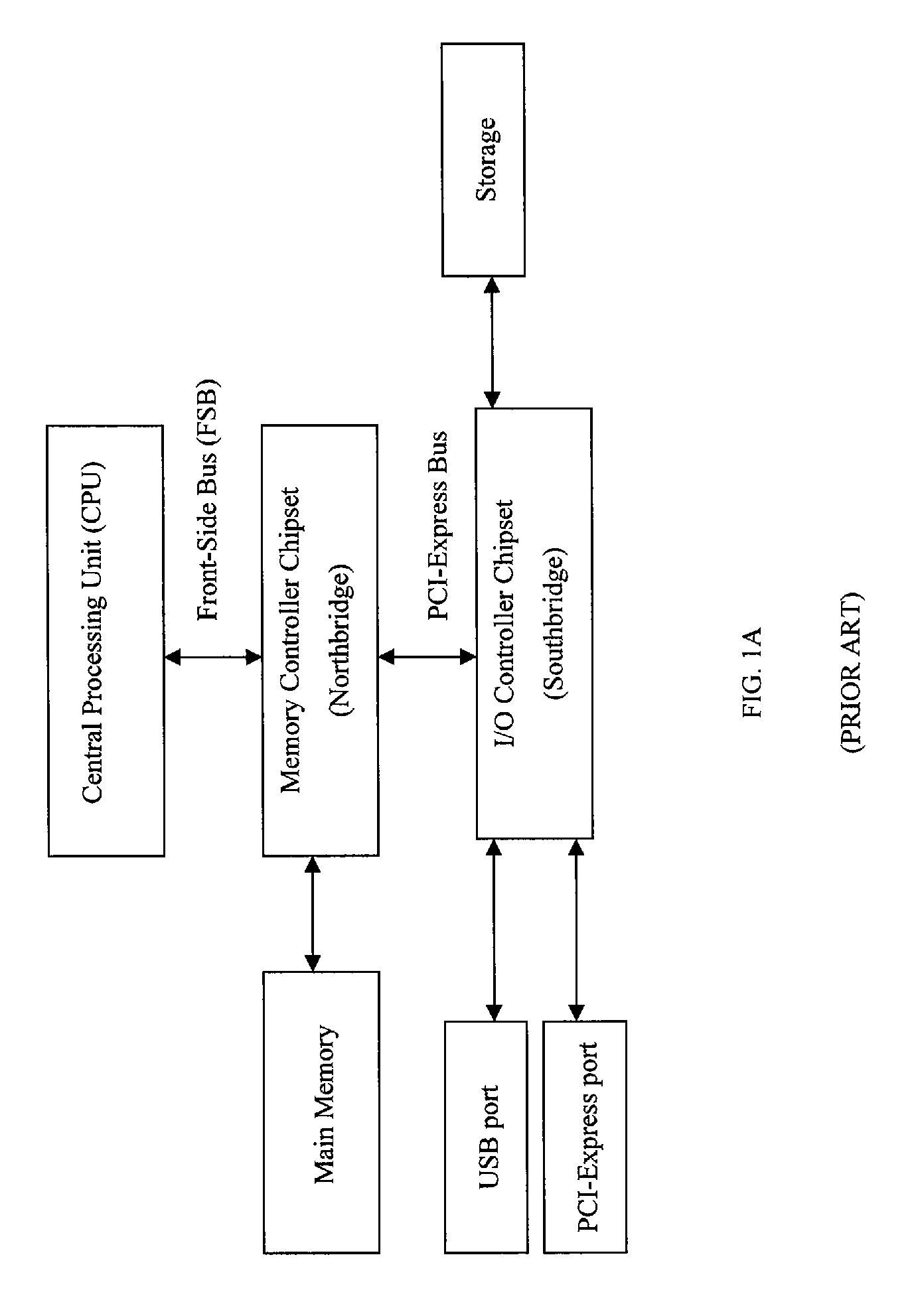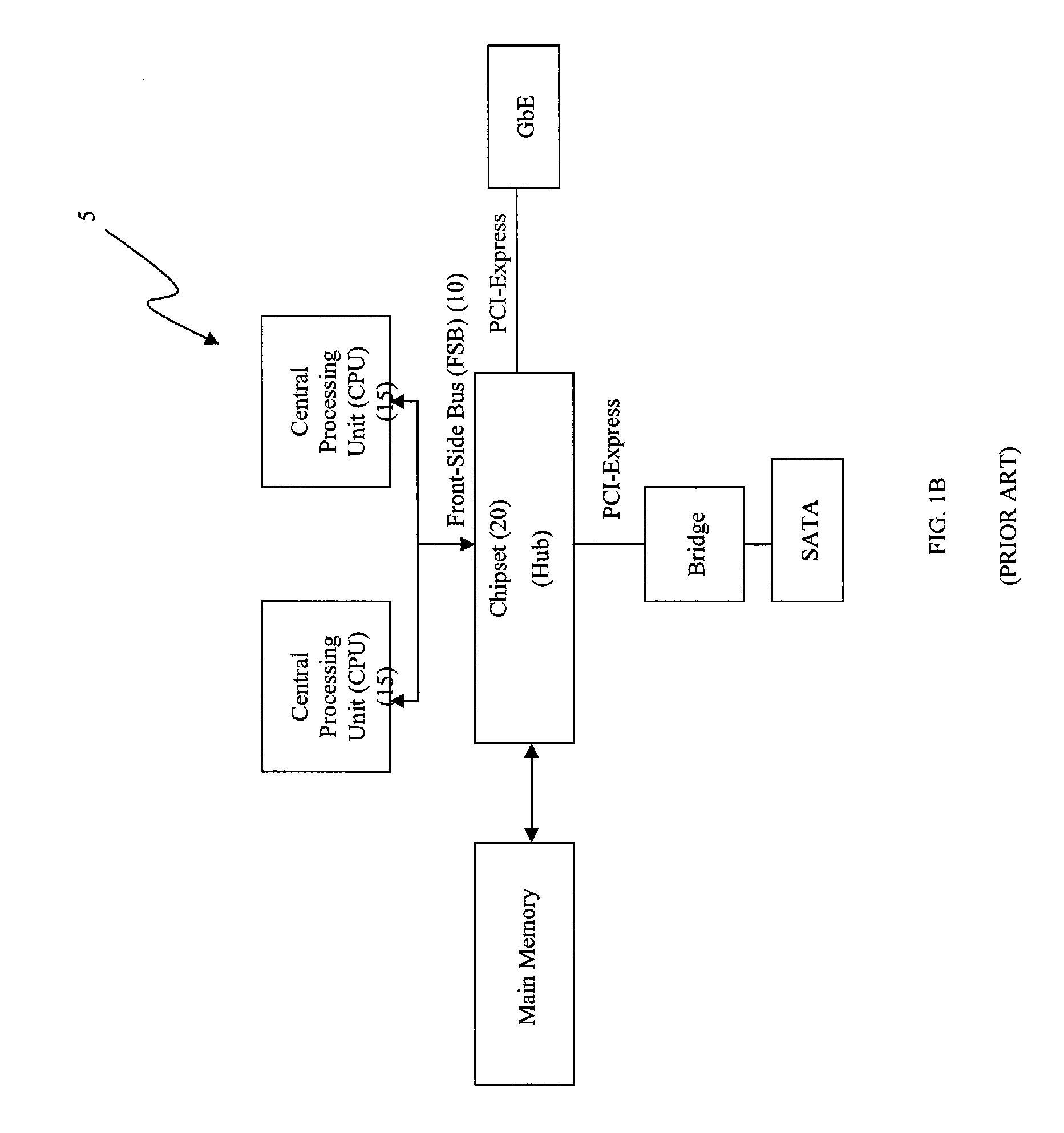On-chip packet interface processor encapsulating memory access from main processor to external system memory in serial packet switched protocol
a serial packet switching and processor technology, applied in the field of communication architectures, can solve the problems of limited operation bandwidth, difficult implementation, and limited local system buses that can operate as parallel bus interconnections at speeds that match the processor speed, and achieve the effect of further reducing the overhead of ethernet protocol
- Summary
- Abstract
- Description
- Claims
- Application Information
AI Technical Summary
Benefits of technology
Problems solved by technology
Method used
Image
Examples
Embodiment Construction
[0037]FIGS. 1A, 1B, 1C, 1D, and 1E illustrate various configurations of front side bus (alternately “Channel”) arrangements for prior art processor chipset architectures. In each of these configurations, a clocked bus interface 10 is used between the processor chip 15 and one or more support chips 20 for purposes of routing data and instructions among the various elements of the computer architecture 5.
[0038]Conventional architectures feature a channel, variously referred to as the Front Side Bus (“FSB”), the Processor Side Bus, the Memory Bus, the Data Bus, or the System Bus, over which the CPU communicates with, for example, a motherboard chipset such as the Northbridge and Southbridge controllers illustrated, for example, in FIG. 1D. The Northbridge 25 interconnects the CPU 15 to the RAM memory 30 via the FSB. The Northbridge also connects peripherals such as the graphics card 35 via high speed channels such as the AGP and the PCI Express. The Southbridge controller 40 handles I / ...
PUM
 Login to View More
Login to View More Abstract
Description
Claims
Application Information
 Login to View More
Login to View More - R&D
- Intellectual Property
- Life Sciences
- Materials
- Tech Scout
- Unparalleled Data Quality
- Higher Quality Content
- 60% Fewer Hallucinations
Browse by: Latest US Patents, China's latest patents, Technical Efficacy Thesaurus, Application Domain, Technology Topic, Popular Technical Reports.
© 2025 PatSnap. All rights reserved.Legal|Privacy policy|Modern Slavery Act Transparency Statement|Sitemap|About US| Contact US: help@patsnap.com



